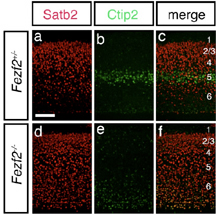Bin Chen
| Professor of MCD Biology B.S., Beijing University M.S., Beijing University Ph.D., SUNY Stony Brook Postdoctorate, Stanford University |
Mammalian Brain Development
Proper generation of different neuronal subtypes in the cerebral cortex and their precise wiring into functional neural circuits underlie our most sophisticated cognitive and perceptual abilities. When this process goes awry, neurological disorders, such as schizophrenia, depression, and obsessive compulsive behavior, can arise. Research in our laboratory is focused on the molecular mechanisms that regulate the neural stem cells to generate different types of neurons and determining how they are wired into functional neural circuits. Neurons in the cerebral cortex are organized into 6 layers. Within each layer, neurons tend to share characteristic physiological properties and axonal projections. During development, cortical neurons are generated in the ventricular zone, which contains dividing stem cells that appear morphologically indistinguishable. These cells generate young neurons that migrate into the cortical plate in an inside-out manner, with early-born neurons in the deepest cortical layers and newer neurons migrating past the older cells to form upper layers.
Our group uses a combination of genetic loss-of-function and gain-of-function approaches to investigate genes that regulate the differentiation of seemingly homogeneous neural stem cells into the diverse neuronal phenotypes that populate the mature cerebral cortex. We are currently identifying candidate genes that likely regulate cortical projection neuron fates and testing their functions during differentiation of neural stem cells into different neural types, and in neural circuit formation during development.
Please follow this link to find the lab's publications in the National Library of Medicine's PubMed database.

The deep layers of Fezf2 homozygous mutant mice show increased expression of Satb2 in deep cortical layers. For details, see Chen et al. (2008) PNAS 105: 11382-11387.
